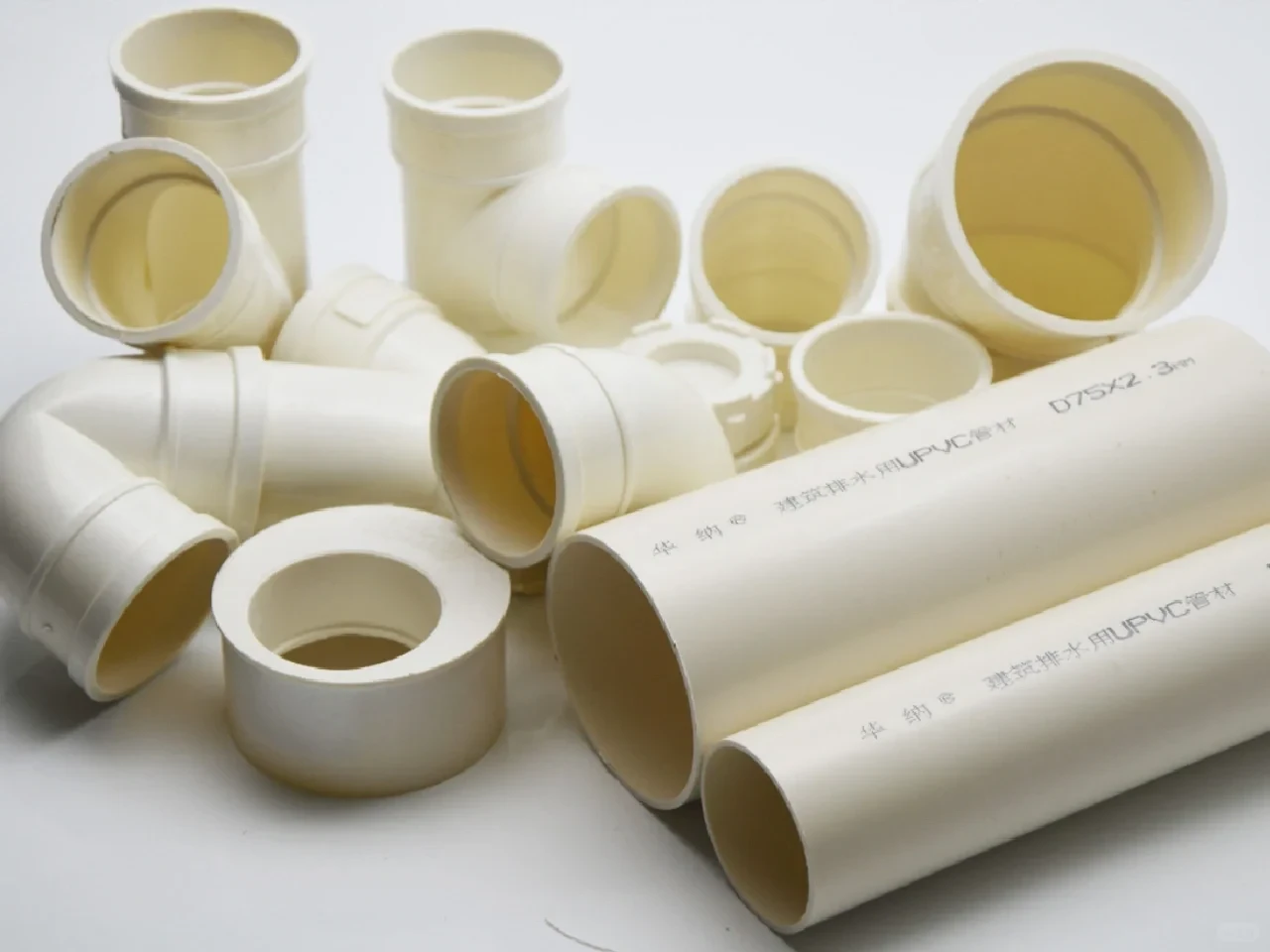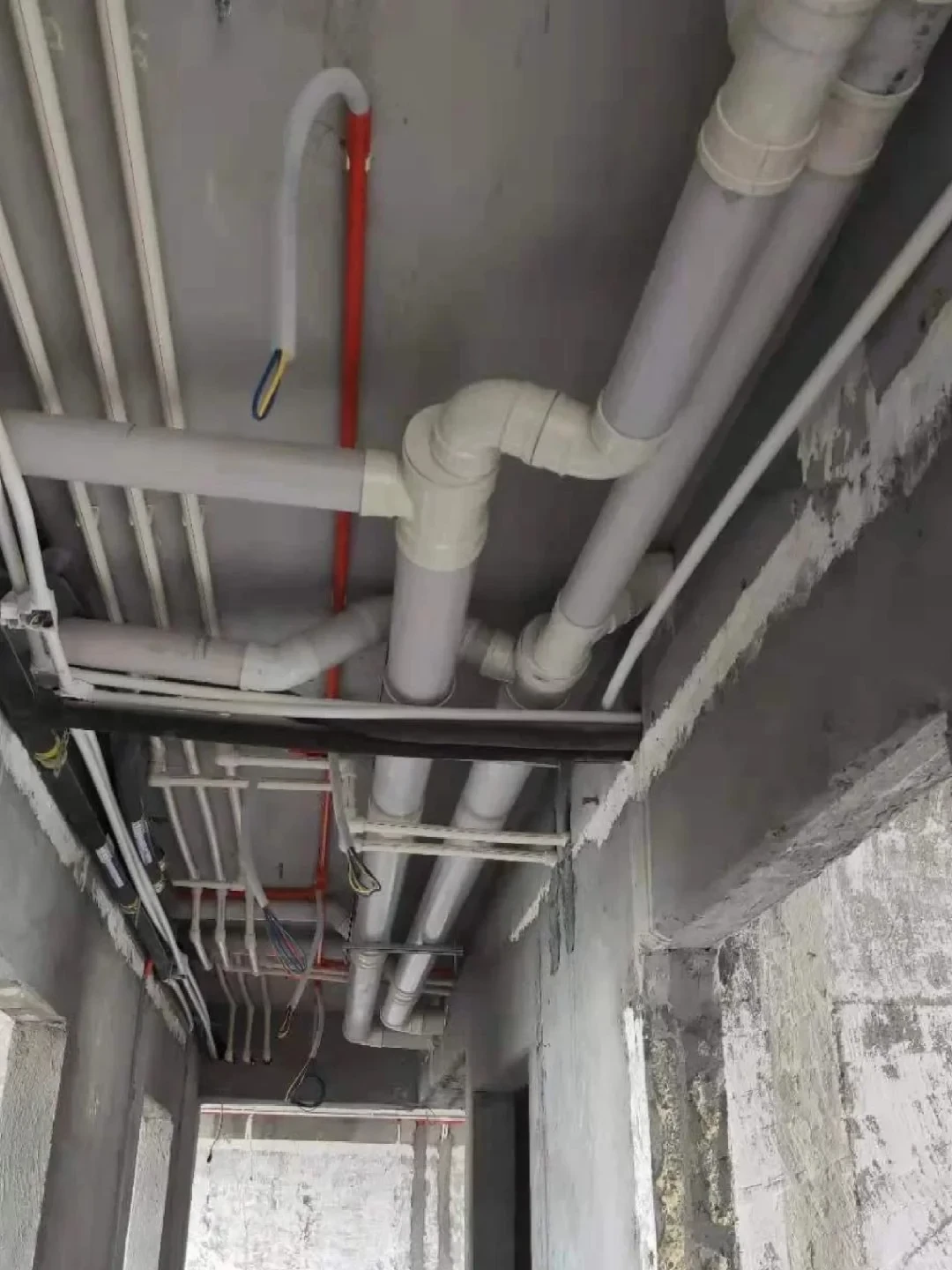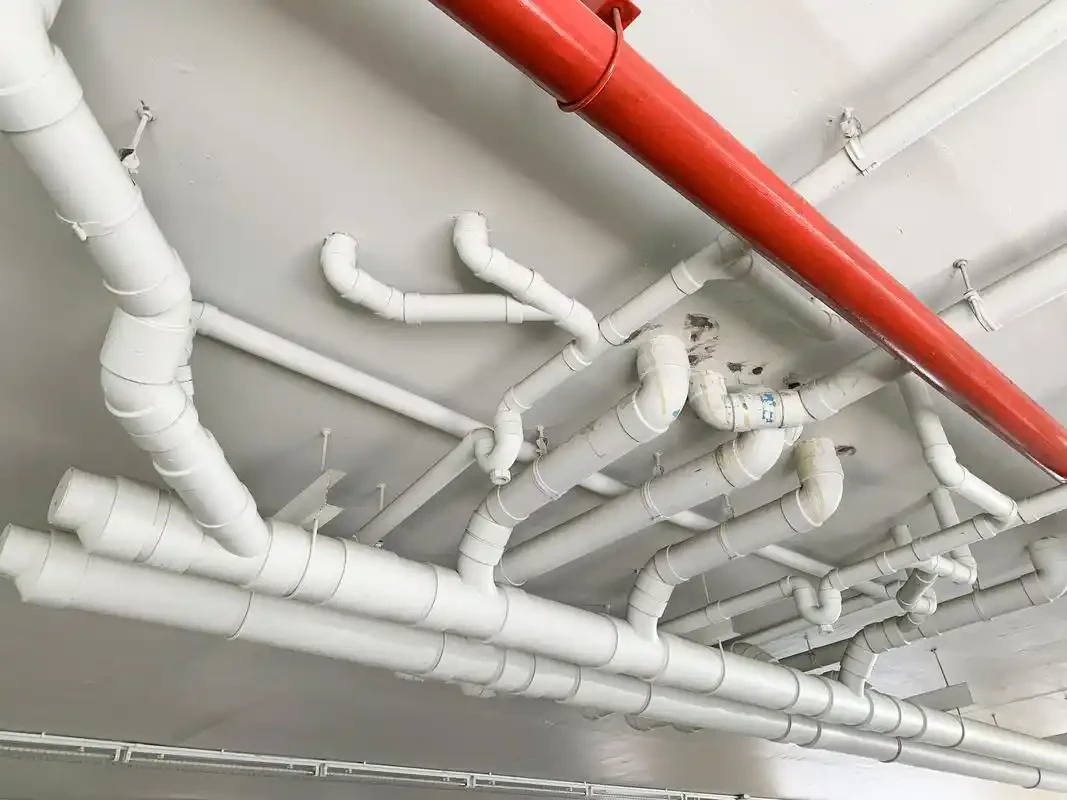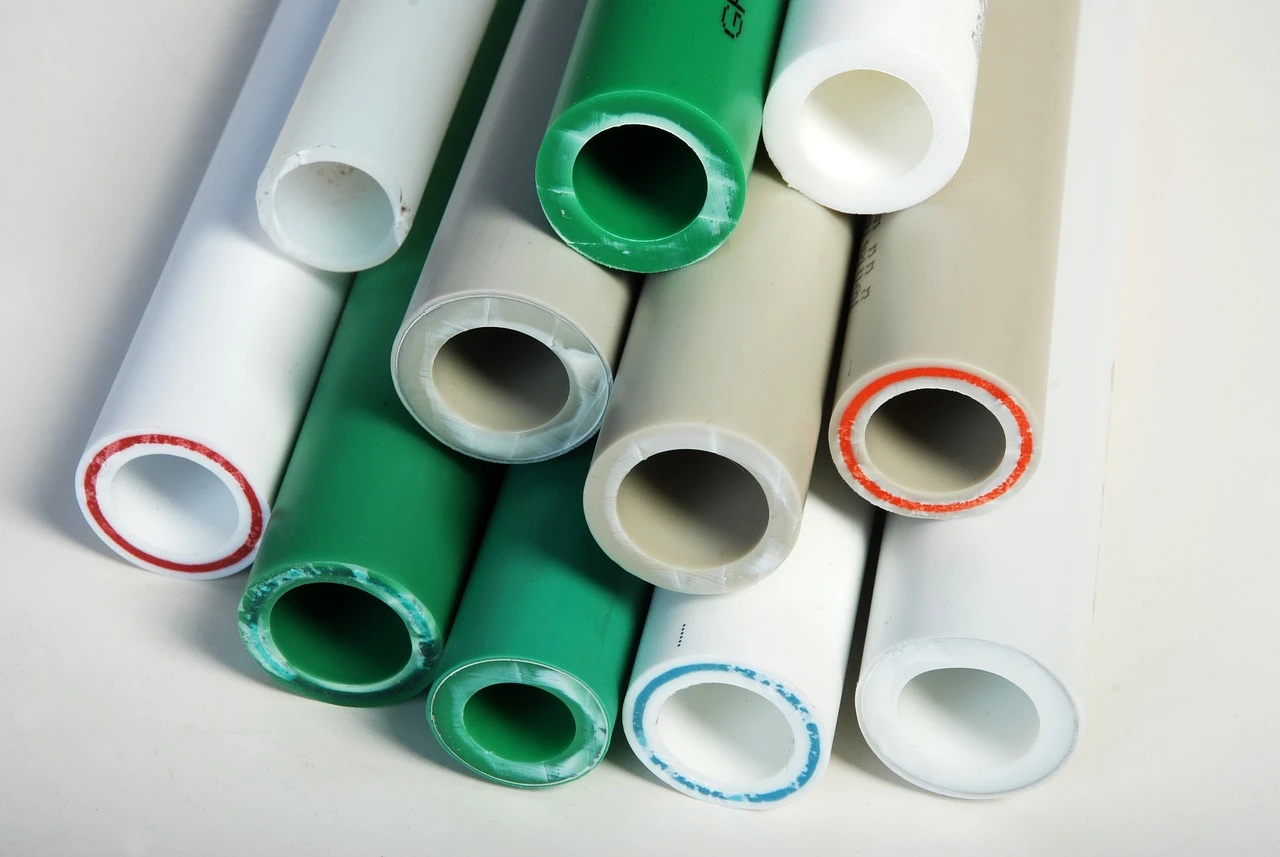As someone who has worked with various piping systems, I need to address a critical safety concern upfront. While this article explores PP-R’s theoretical advantages for compressed air, most manufacturers explicitly prohibit this application due to safety risks. My professional experience confirms that specialized materials better serve compressed air systems.
PP-R pipes offer certain theoretical advantages for compressed air applications, including excellent corrosion resistance, smooth interior surfaces, and fusion-welded joints. However, most manufacturers prohibit compressed air use due to safety concerns with rapid crack propagation and different failure modes between liquid and gas systems.
Understanding both the potential benefits and significant limitations helps make informed decisions about compressed air piping. Let’s examine the characteristics that theoretically make PP-R suitable while acknowledging the important safety considerations.
How do PP-R pipes handle the pressure requirements of compressed air systems?
PP-R pipes demonstrate impressive pressure capabilities in water systems, but compressed air presents different challenges that require careful consideration.
PP-R pipes typically maintain pressure ratings of 1.0-1.6 MPa (145-232 PSI) at 20°C, which technically covers most standard compressed air requirements. The material’s molecular structure provides consistent pressure resistance, though manufacturers caution that gas applications involve different safety factors than water systems.

PP-R’s pressure capabilities stem from its polypropylene random copolymer structure, which creates a robust molecular network. This structure enables the material to withstand continuous internal pressure while maintaining dimensional stability. The pressure ratings derive from extensive testing according to ISO 9080 standards, which predict long-term performance under hydraulic pressure.
Pressure Rating Fundamentals
Standard PP-R classifications include PN16, PN20, and PN25, corresponding to pressure capabilities of 1.0, 1.25, and 1.6 MPa respectively at 20°C. These ratings apply to cold water applications and incorporate safety factors that account for material variations and occasional pressure surges. For most industrial compressed air systems operating at 6-10 bar (87-145 PSI), these ratings appear sufficient on paper.
Material Behavior Under Pressure
PP-R’s pressure ratings come from ISO 9080 hydrostatic testing (predicting 50-year water performance). Grades like PN16 (1.0 MPa) and PN20 (1.25 MPa) work for cold water—but compressed air’s energy storage changes failure dynamics.
Table: PP-R Pressure Capabilities vs. Typical Compressed Air Requirements
| System Type | Typical Operating Pressure | PP-R Suitability | Ключевые соображения |
|---|---|---|---|
| Small Workshop | 6-8 bar (87-116 PSI) | Theoretically adequate | Safety concerns remain |
| Industrial Plant | 8-10 bar (116-145 PSI) | Marginally adequate | Not recommended |
| High-Pressure Systems | 10-15 bar (145-218 PSI) | Questionable | Significant safety risks |
| Special Applications | 15+ bar (218+ PSI) | Not suitable | Manufacturer prohibitions apply |
Temperature and Pressure Relationship
PP-R’s pressure capability decreases as temperature increases—a crucial consideration for compressed air systems where air temperature can rise during compression. At 40°C, PP-R’s pressure rating typically reduces by approximately 30%, and at 60°C, it may decrease by 50% or more. Proper system design must account for these derating factors, though manufacturer restrictions often make this consideration irrelevant for compressed air applications.
What corrosion resistance advantages does PP-R offer over metal pipes?
PP-R’s complete immunity to corrosion represents its most significant advantage over metallic alternatives, though this benefit must be weighed against safety considerations for air systems.
PP-R pipes offer complete corrosion resistance, eliminating rust, scaling, and electrochemical degradation that plague metal pipes in compressed air systems. This maintains air quality, prevents pressure drops from internal scaling, and ensures consistent performance without the maintenance requirements of metallic alternatives.

Corrosion represents a major challenge in compressed air systems, particularly where moisture accumulates. Traditional metal pipes suffer from internal rusting that contaminates air tools, damages equipment, and gradually reduces system efficiency through increased friction and restricted flow.
Corrosion Mechanisms in Compressed Air
Compressed air naturally contains moisture that condenses as the air cools after compression. This moisture accelerates corrosion in steel pipes, creating rust particles that travel through the system. Copper pipes resist corrosion better but can develop oxidation over time. Aluminum generally performs well but can suffer from galvanic corrosion when connected to dissimilar metals.
PP-R remains completely unaffected by these corrosion mechanisms. The material is chemically inert, meaning it doesn’t react with water, oxygen, or the minor contaminants typically found in compressed air. This inherent resistance ensures that the pipe interior remains smooth throughout its service life, maintaining consistent airflow and pressure delivery.
Air Quality and System Maintenance
The corrosion resistance directly impacts air quality and maintenance requirements. Metal pipes require regular draining, filtration, and eventual replacement due to corrosion damage. PP-R systems eliminate these concerns, potentially reducing long-term maintenance costs. The non-corrosive nature also means cleaner air delivery to tools and equipment, extending their service life and maintaining performance.
Table: Corrosion Performance Comparison in Compressed Air Systems
| Материал | Устойчивость к коррозии | Maintenance Impact | Air Quality Effect |
|---|---|---|---|
| Galvanized Steel | Prone to rusting | Regular draining, eventual replacement | Rust contamination |
| Copper | Good resistance | Minimal maintenance | Generally clean |
| Aluminum | Excellent resistance | Low maintenance | Very clean |
| PP-R | Complete immunity | Virtually maintenance-free | No contamination |
Cost Implications of Corrosion Resistance
The corrosion resistance translates to economic benefits through reduced maintenance and longer system life. Metal pipes typically require replacement after 10-20 years due to corrosion damage, while PP-R maintains its integrity indefinitely in water applications. However, for compressed air use, safety concerns rather than corrosion limitations typically determine the service life.
How does the thermal stability of PP-R ensure consistent performance in air lines?
PP-R maintains dimensional stability across the temperature ranges typically encountered in compressed air systems, though understanding its limitations is crucial for safe application.
PP-R maintains excellent thermal stability between -10°C and 70°C, with short-term tolerance to 95°C, covering the normal operating range of compressed air systems. The material’s low thermal conductivity reduces heat loss in compressed air lines and prevents condensation formation that plagues metal piping systems.

Thermal management represents a significant challenge in compressed air systems. Air temperatures can vary widely from the compression stage through distribution, and the piping material must accommodate these changes without compromising performance or safety.
Temperature Range Performance
PP-R operates effectively across the temperature spectrum normally encountered in compressed air applications. The material remains flexible and impact-resistant at temperatures as low as -10°C, which covers most industrial environments. At the upper end, PP-R handles temperatures up to 70°C continuously, exceeding the typical discharge temperatures of properly functioning compressed air systems.
The thermal expansion coefficient of PP-R is approximately 0.15 mm/m°C, meaning a 10-meter length will expand about 15 mm with a 10°C temperature increase. While higher than metals, this expansion is manageable with proper installation practices including expansion loops and appropriate mounting.
Thermal Conductivity Advantages
PP-R’s low thermal conductivity (approximately 0.24 W/mK) provides inherent insulation properties that benefit compressed air systems. This characteristic reduces heat loss as air travels from the compressor, helping maintain consistent pressure and volume. More importantly, it minimizes condensation formation within the pipes by reducing the temperature differential between the air and surrounding environment.
Table: Thermal Properties Comparison for Compressed Air Piping
| Материал | Thermal Conductivity | Condensation Prevention | Диапазон температур |
|---|---|---|---|
| Copper | 400 W/mK | Poor – high condensation | Excellent |
| Steel | 50 W/mK | Poor – high condensation | Excellent |
| Aluminum | 220 W/mK | Moderate condensation | Excellent |
| PP-R | 0.24 W/mK | Excellent – minimal condensation | Good for most applications |
Managing Thermal Expansion
The thermal expansion characteristics require consideration during system design. Proper mounting intervals, expansion loops, and guidance provisions accommodate dimensional changes without stressing the pipe or fittings. In compressed air applications, these considerations become particularly important where temperature fluctuations are more pronounced than in water systems.
What installation benefits make PP-R a cost-effective choice for compressed air?
PP-R’s installation advantages potentially offer significant cost savings, though these must be balanced against the material limitations for compressed air applications.
PP-R installation requires minimal specialized tools and skills compared to metal alternatives, with heat fusion creating leak-free joints faster than threading, welding, or soldering. The lightweight nature reduces labor costs and handling equipment requirements, while the flexibility simplifies routing around obstacles.

The installation process significantly impacts the overall cost and timeline of compressed air system implementation. PP-R offers distinct advantages in this area, though professional judgment must determine whether these benefits outweigh the application limitations.
Jointing System Efficiency
The heat fusion jointing system represents PP-R’s most significant installation advantage. This process involves heating the pipe and fitting simultaneously then joining them to create a monolithic, leak-free connection. Unlike threaded joints that can leak or loosen over time, properly executed fusion joints become the strongest part of the system. The process requires minimal training compared to welding or brazing skills needed for metal pipes.
A two-person crew can typically complete PP-R installations 30-50% faster than comparable metal piping systems. The fusion process takes approximately 30 seconds per joint for smaller diameters, with no cooling or curing time required before pressure testing. This efficiency translates directly to labor cost savings and faster project completion.
Material Handling Advantages
PP-R’s lightweight nature significantly reduces installation effort and cost. A 6-meter length of 2-inch PP-R pipe weighs approximately 5 kg, compared to 22 kg for similar steel pipe. This weight difference means fewer workers, less physical strain, and no requirement for heavy lifting equipment in most applications.
The flexibility of PP-R in smaller diameters allows slight bending to navigate around obstacles, reducing the number of fittings required. This flexibility, combined with the wide range of available fittings, enables efficient routing in complex spaces where metal pipes would require precise measurements and multiple custom-fabricated components.
Table: Installation Factor Comparison for Compressed Air Piping
| Factor | Steel Pipe | Copper Pipe | PP-R Pipe |
|---|---|---|---|
| Jointing Method | Threading/welding | Soldering/brazing | Heat fusion |
| Skill Requirement | High | Moderate | Low |
| Installation Speed | Slow | Moderate | Fast |
| Tool Investment | High | Moderate | Low |
| Weight Impact | Significant | Moderate | Minimal |
System Modification and Expansion
The ease of modification provides long-term advantages for evolving compressed air systems. Adding drops, moving equipment, or expanding systems becomes straightforward with PP-R’s simple fusion process. Unlike threaded systems where disassembly can prove difficult after years of service, PP-R systems can be easily modified by cutting out existing sections and fusion-joining new components.
While these installation benefits appear compelling, professionals must remember that manufacturer restrictions and safety concerns typically override installation convenience for compressed air applications. The theoretical advantages become irrelevant when balanced against the fundamental safety requirements of compressed gas systems.
Заключение
While PP-R offers theoretical advantages for compressed air systems including corrosion resistance, thermal stability, and installation efficiency, manufacturers universally prohibit this application due to safety concerns with rapid crack propagation in gas systems. Professionals should prioritize safety over convenience, selecting materials specifically designed and certified for compressed air applications despite PP-R’s apparent benefits.Is PP-R Pipe Safe for Compressed Air Systems?













Последние комментарии